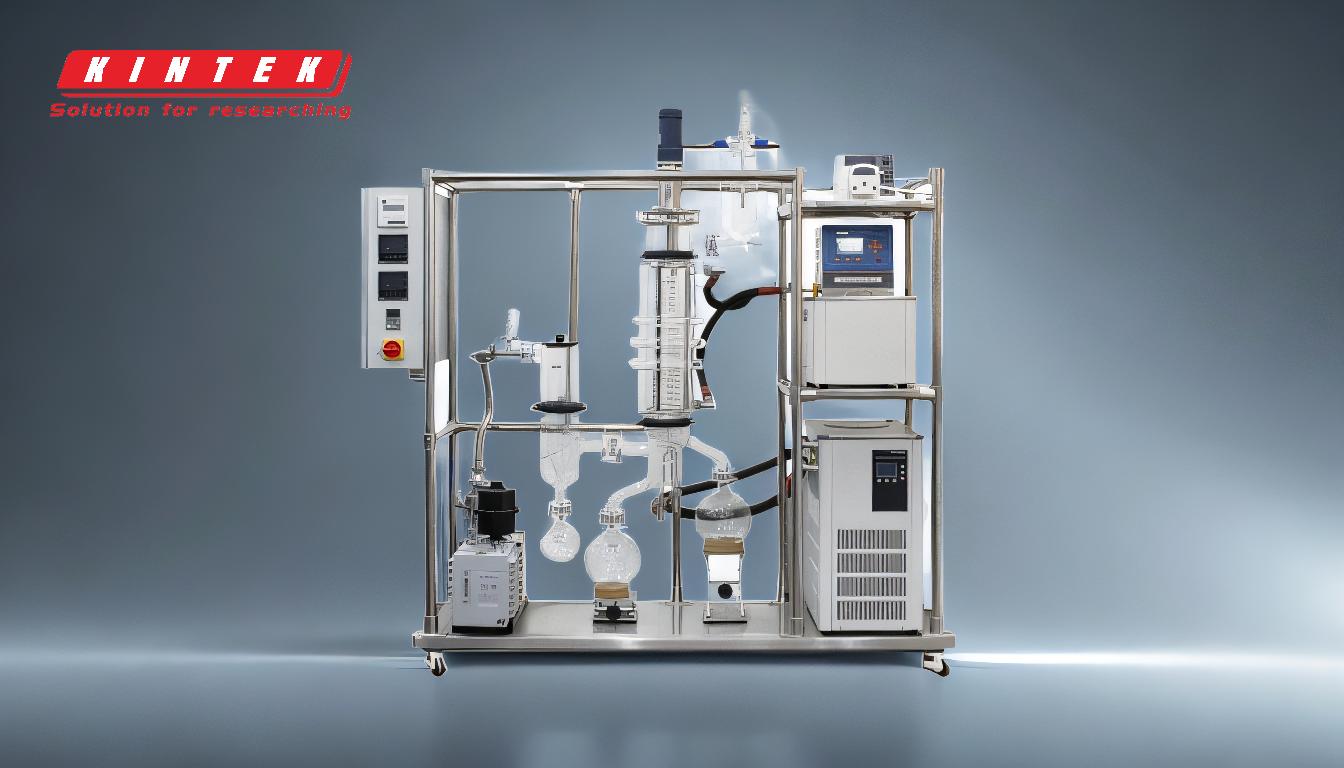Molecular distillation is a specialized form of vacuum distillation that operates under extremely low pressure, typically below 0.01 torr (1.3 Pa). This process is also referred to as short-path distillation due to the close proximity between the evaporation and condensation surfaces, which is essential for its effectiveness. Molecular distillation is particularly useful for separating, purifying, and concentrating thermally sensitive materials, natural products, and complex molecules. The process relies on the principle of molecular flow, where the mean free path of molecules is comparable to the size of the equipment, allowing for efficient separation based on differences in evaporation rates.
Key Points Explained:

-
Definition and Alternative Name:
- Molecular distillation is a type of vacuum distillation that operates under very low pressure, typically below 0.01 torr (1.3 Pa).
- It is also known as short-path distillation because the distance between the evaporation surface and the condensation surface is very short, which is crucial for the process to work effectively.
-
Operational Principle:
- The process relies on the free molecular flow regime, where the mean free path of molecules is comparable to the size of the equipment.
- This allows for the separation of liquid mixtures based on the difference in the evaporation rates of each component.
-
Applications:
- Molecular distillation is used for the separation, purification, and concentration of natural products, complex molecules, and thermally sensitive materials.
- It is particularly useful in industries dealing with high molecular weight compounds, such as cannabinoids, essential oils, and other delicate substances.
-
Comparison with Other Distillation Types:
- Unlike simple or fractional distillation, molecular distillation operates under much lower pressure and involves a shorter path between the evaporation and condensation surfaces.
- It is more suitable for materials that are sensitive to heat and require gentle processing conditions.
-
Equipment and Setup:
- The equipment used in molecular distillation includes a heated evaporation surface and a condensing surface placed very close to it.
- The close proximity of these surfaces is essential to ensure that the molecules travel a short distance before condensing, which is critical for the process's efficiency.
-
Advantages:
- Molecular distillation allows for the processing of thermally sensitive materials without causing degradation.
- It provides high purity and concentration of the desired compounds, making it ideal for applications in pharmaceuticals, food, and chemical industries.
-
Challenges:
- The process requires precise control of vacuum pressure and temperature to ensure optimal separation.
- The equipment must be designed to maintain the close distance between the evaporation and condensation surfaces, which can be technically challenging.
In summary, molecular distillation, also known as short-path distillation, is a highly specialized and efficient method for separating and purifying thermally sensitive and complex materials. Its unique operational principles and equipment setup make it indispensable in various high-tech industries.
Summary Table:
| Aspect | Details |
|---|---|
| Definition | A vacuum distillation method operating below 0.01 torr (1.3 Pa). |
| Alternative Name | Short-path distillation due to close evaporation-condensation surfaces. |
| Operational Principle | Relies on molecular flow, separating mixtures based on evaporation rates. |
| Applications | Purification of natural products, cannabinoids, essential oils, and more. |
| Advantages | High purity, gentle processing for heat-sensitive materials. |
| Challenges | Requires precise control of pressure, temperature, and equipment design. |
Learn how molecular distillation can benefit your industry—contact our experts today!









